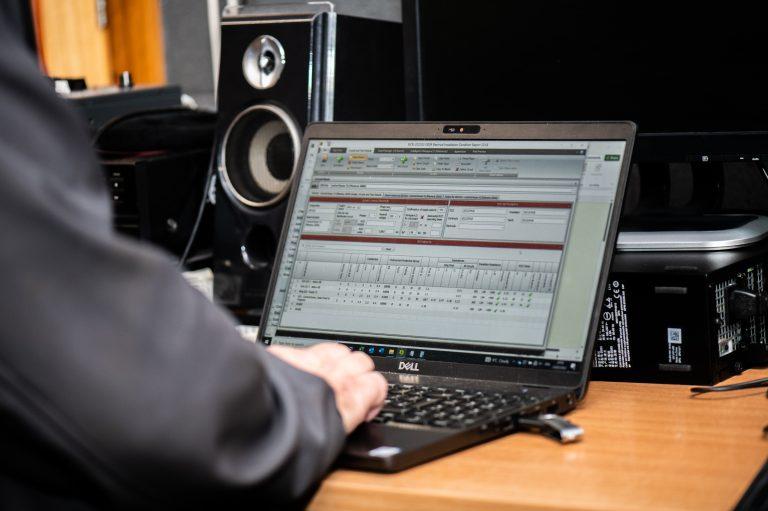Thermal imaging is used to identify apparent temperature differences in industrial three-phase electrical circuits.
Thermal imaging is an easy way to identify apparent temperature differences in three-phase electrical circuits, compared to their normal operating conditions. By inspecting the thermal gradients of all three phases side-by-side, technicians can quickly spot performance anomalies on individual legs due to unbalance or overloading.
Electrical unbalance can be caused by several different sources: a power delivery problem, low voltage on one leg, or an insulation resistance breakdown inside the motor windings.
Even a small voltage unbalance can cause connections to deteriorate, reducing the amount of voltage supplied, while motors and other loads will draw excessive current, delivery lower torque (with associated mechanical stress), and fail sooner. A severe unbalance can blow a fuse, reducing operations down to a single phase. Meanwhile the unbalanced current will return on the neutral, causing the utility to fine the facility for peak power usage.
What’s the potential cost of failure?
Motor failure is a common result of voltage unbalance. Total cost combines the cost of a motor, the labour required to change out a motor, the cost of product discarded due to uneven production, line operation and the revenue lost during the time a line is down.
Assume the cost to replace a 50 hp motor each year is £5000 including labour. Assume 4 hours of downtime per year with income loss of £6000 per hour. Total cost: £5000 = (4 x £6000) = £29,000 annually. Compare this to a Thermal Imaging Survey of £600.00 per day and it is easy to see the potential savings.
What to check?
Capture thermal images of all electrical panels and other high-load connection points such drives, disconnects, controls and so on. Where you discover higher temperatures, follow that circuit and examine associated branches and loads.
Check panels and other connections with the covers off. Ideally, you should check electrical devices when they are fully warmed up and at steady state conditions with at least 40% of the typical load. That way, measurements can be properly evaluated and compared to normal operating conditions.
What to look for?
Equal load should equate to equal temperatures. In an unbalanced load situation, the more heavily loaded phase(s) will appear warmer than the others, due to the heat generated by resistance. However, an unbalanced load, an overload, a bad connection, and a harmonic imbalance can all create a similar pattern. Measuring the electrical load is required to diagnose the problem
It is sound procedure to create a regular inspection route that includes all key electrical connections. Using the report of our Thermal Imaging Surveys over time you’ll have baseline images to compare to later images. This procedure will help you determine whether a hot or cool spot is unusual. Following corrective action, new images will help you determine if repairs were successful.
What represents a “red alert”?
Repairs should be prioritised by safety first – i.e. equipment conditions that pose a safety risk – followed by criticality of the equipment and the extent of the temperature rise.
Guidelines dictate immediate action when the difference in temperature between similar electrical components under similar loading exceeds 15° C or when the between an electrical component and the ambient air temperatures exceeds 40° C.
With motors we warn against operating any motor at a voltage unbalance exceeding one percent. We recommends that motors be de-rated if operating at a higher unbalance. Safe unbalance percentages vary for other equipment.
Follow up actions
When a thermal image shows an entire conductor is warmer than other components throughout part of a circuit, the conductor could be undersized or overloaded. Check the conductor rating and the actual load to determine which is the case.
Use a multimeter with a clamp, a clamp meter or a power quality analyser to check current balance and loading on each phase. One the voltage side, check the protection and switchgear for voltage drops. In general, line voltage should be within 10% of the nameplate rating. Neutral to ground voltage tells you how heavily your system is loaded and helps you track harmonic current. Neutral to ground voltage higher than 3% should trigger further investigation.
Loads do change, and a phase can suddenly be 5 percent lower on one leg, if a significantly large single-phase load comes online. Voltage drops across the fuses and switches can also show up as unbalance at the motor and excess heat at the root trouble spot. Before you assume the cause has been found, double check with both the thermal imager and multi-meter or clamp meter current measurements.
Neither feeder nor branch circuits should be loaded to the maximum allowable limit. Circuit load equations should also allow for harmonics. The most common solution to overloading is to redistribute loads among the circuits, or to manage when loads come on during the process.
Using the associated software, each suspected problem uncovered with a thermal imager can be documented in a report that includes a thermal image and a digital image of the equipment. That’s the best way to communicate problems and to suggest repairs.




